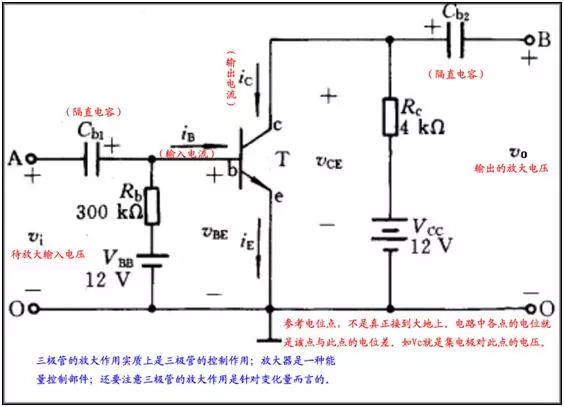
Image Memory Method:
To understand how a transistor amplifies, remember that energy can't be created from nothing. A transistor doesn't generate energy; it just converts the power supply's energy into signal energy. But what makes transistors powerful is their ability to control large currents with small ones.
Imagine the transistor as a dam with two gates—one big and one small. The small gate is controlled manually, while the big gate is too heavy to open directly. Instead, the small gate controls the flow of water, which in turn opens the big gate. So when you open the small gate slightly, a trickle flows through, which then triggers the big gate to release a much larger flow of water.
By adjusting the size of the small gate, you can control the amount of water coming out of the big gate. This is like linear amplification in a transistor. If the small gate isn’t opened enough, the big gate won’t open at all—this is the cutoff region. If the small gate is over-opened, the big gate reaches its maximum flow, which is the saturation region.
In this analogy, Ube represents the small stream, Uce is the big stream, and the input signal is the person opening the small gate. Transistors are current-controlled devices, so comparing them to current rather than voltage gives a more accurate understanding.
If the small gate is adjusted continuously, the system operates in the linear amplification region. If the small gate is closed completely, the transistor enters the cutoff region. If it’s fully open and the flow can't increase further, it’s in the saturation region. You can return it to the linear region by reducing the input.
Now, think about the reservoir. If the water level is too high, it might cause the dam to fail even without opening the gate. This is similar to reverse breakdown in a diode. When the reverse voltage exceeds the junction's limit, thermal or electrical breakdown occurs. Electrical breakdown is reversible, but thermal breakdown causes permanent damage.
In analog circuits, the transistor usually works in the middle range, where the output is proportional to the input. In digital circuits, it acts like a switch—either fully on or off. For example, when driving an LED with a microcontroller, the transistor switches between cutoff and saturation, not operating in the linear region.
Manufacturing transistors involves making the emitter highly doped with electrons and the base very thin. When the base-emitter junction is forward-biased (around 0.7V for silicon), electrons move from the emitter to the base, then to the collector, forming the collector current. The base current is small, allowing the transistor to act as a current amplifier.
Theoretical Memory Method:
When both the emitter and collector junctions are reverse-biased, the transistor is in cutoff mode. Only a small leakage current exists, and the collector-emitter voltage is close to the supply voltage. This is like a switch being off.
When both junctions are forward-biased, the transistor enters saturation. The collector current is limited by the external circuit, and the collector-emitter voltage drops to a low value, acting like a closed switch. This is used in digital applications where the transistor is either fully on or off.
Transistors can operate in three main regions: cutoff, active (amplification), and saturation. Understanding these states helps in designing circuits that use transistors efficiently.
Junction Field-Effect Transistor (JFET):
An N-channel JFET can be thought of as a faucet with a smart, adjustable valve. The gate controls the flow of water (current) from the source to the drain. Applying a negative voltage to the gate narrows the channel, reducing the current. As the gate voltage becomes more negative, the channel closes until no current flows.
The JFET’s behavior is influenced by the voltage between the drain and source. A higher voltage increases the electric field in the channel, which can cause the channel to narrow—similar to a faucet getting tighter under pressure.
Insulated Gate FET (MOSFET):
An N-channel enhancement MOSFET works similarly to a JFET but uses an insulated gate. No current flows through the gate, and the channel is induced by applying a positive voltage to the gate. The more voltage applied, the wider the channel, and the more current flows through the device.
For depletion MOSFETs, the channel exists even without a gate voltage. Applying a positive gate voltage enhances the channel, while a negative voltage reduces it. This allows for more precise control over the current flow.
Understanding these concepts helps in selecting the right transistor for different applications, whether it's for amplification, switching, or signal processing.
12kw hybrid inverter,gootu solar hybrid inverter,gootu parallel solar hybrid inverter,hybrid solar inverter 10kw,hybrid solar inverter 5kw,48v hybrid solar inverter,mppt solar hybrid inverter,hybrid solar inverter 11kw,48v hybrid solar inverter,hybrid inv
Shenzhen Jiesaiyuan Electricity Co., Ltd. , https://www.gootuenergy.com
